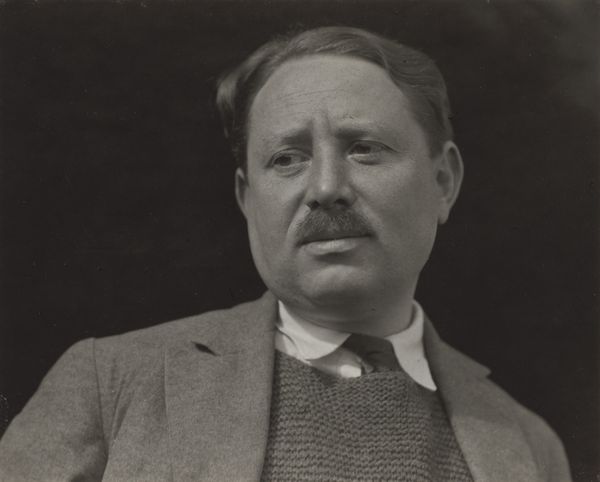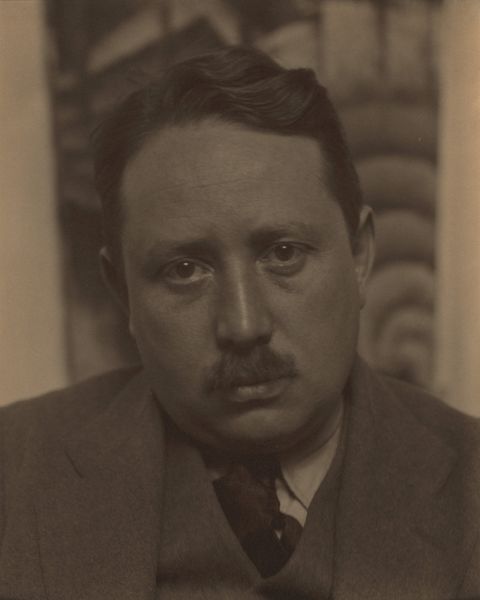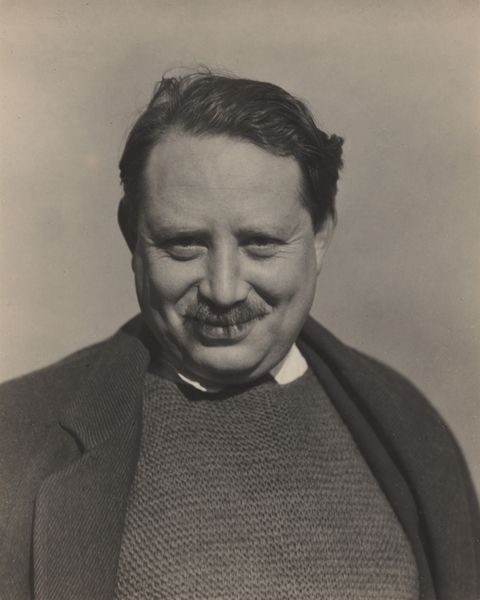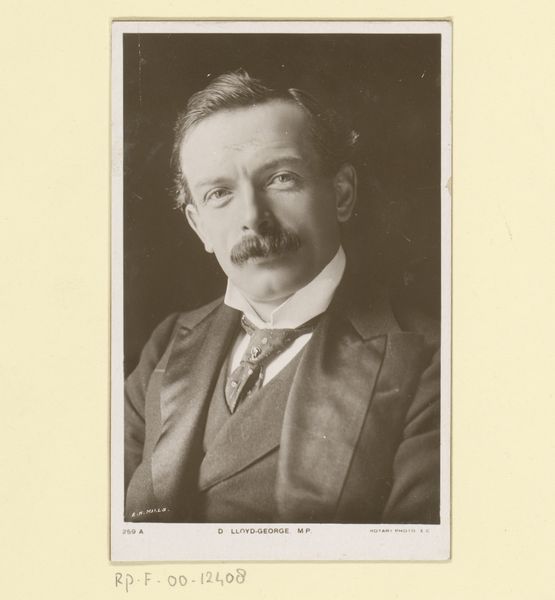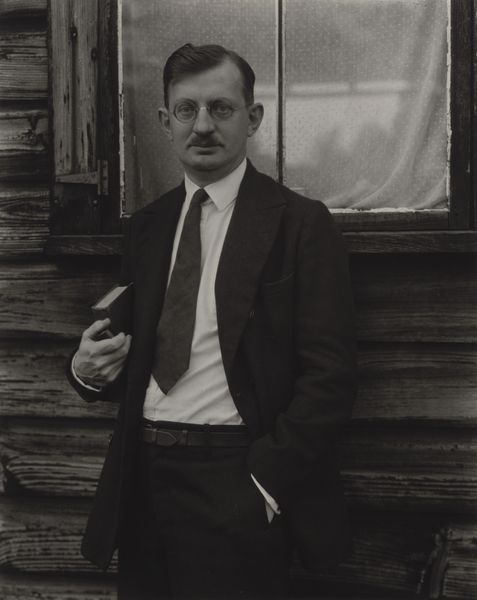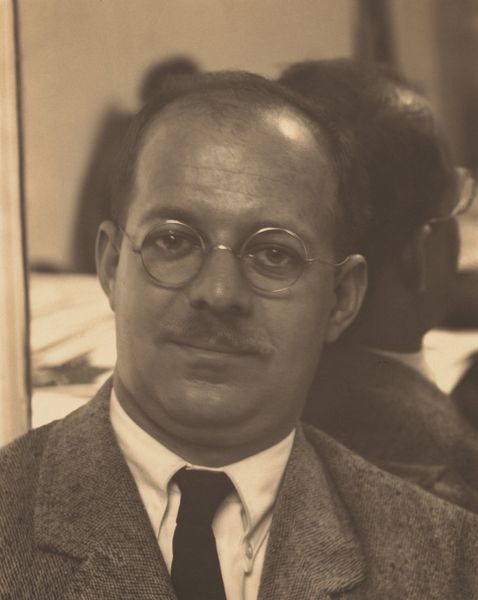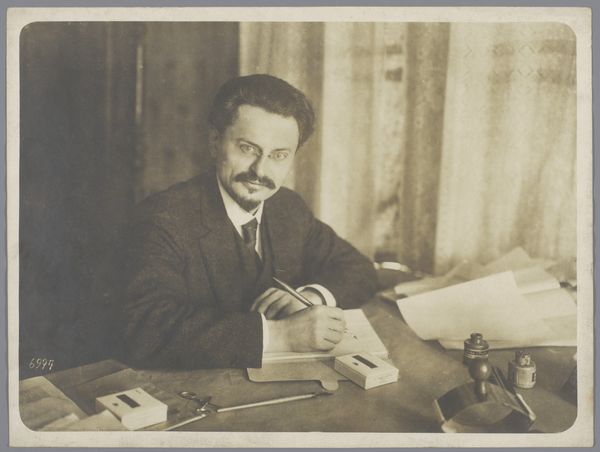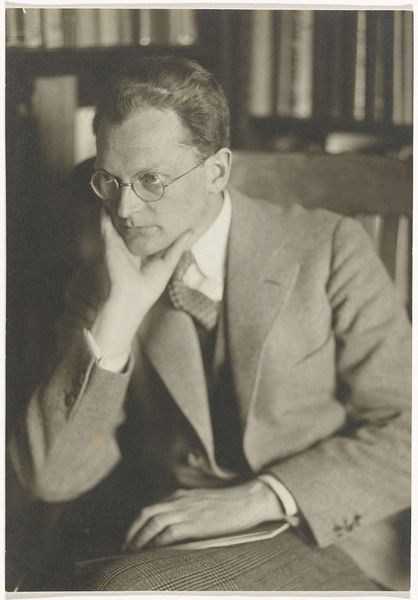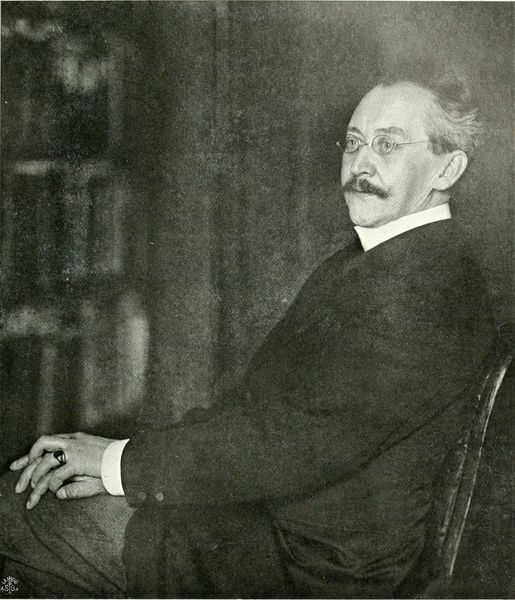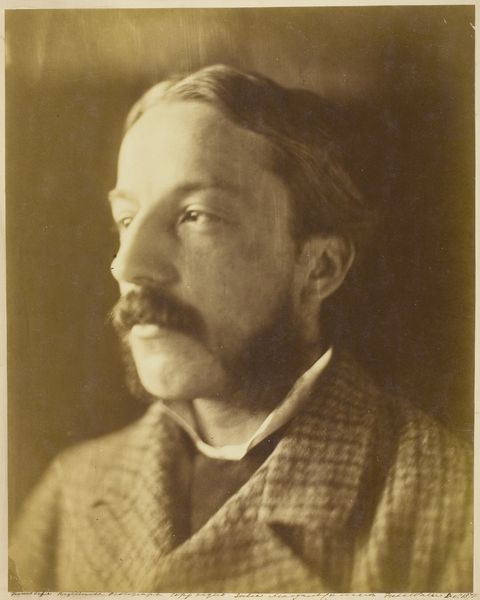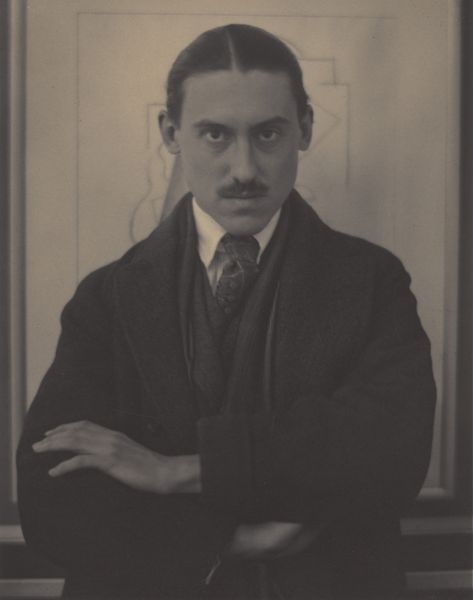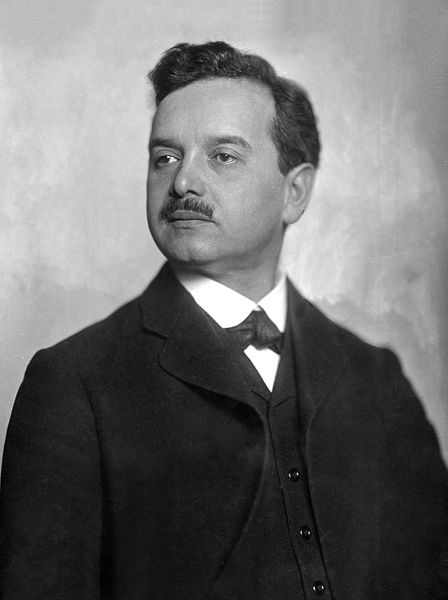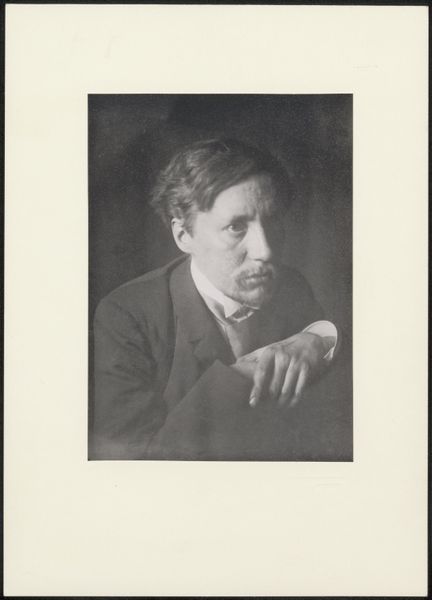
photography
#
portrait
#
black and white photography
#
photography
#
black and white
#
single portrait
#
monochrome photography
#
modernism
Dimensions: sheet (trimmed to image): 23.3 x 18.6 cm (9 3/16 x 7 5/16 in.) mount: 50.8 x 38.8 cm (20 x 15 1/4 in.)
Copyright: National Gallery of Art: CC0 1.0
Editor: This is Alfred Stieglitz's photograph "Paul Rosenfeld," taken in 1920. It's a striking portrait. There's a sort of casual confidence to it, but something about the books on the desk makes it feel more formal, even scholarly. What do you see in this image? Curator: I see the politicization of intellectual identity. Stieglitz wasn’t simply capturing Rosenfeld’s likeness; he was constructing a very specific public persona for a man who was influential in shaping American modernist tastes. The presence of those books, the studied informality of his pose... It’s all curated, wouldn’t you say? What’s your read on the context clues embedded in that arrangement of books? Editor: Well, it suggests that Rosenfeld is an intellectual and that he's actively working. Do you think Stieglitz was intentionally trying to project a particular image to his audience? Curator: Absolutely. Stieglitz had a clear agenda in promoting American modernism. These portraits, showcased in his galleries, weren’t just about the individual. They were about elevating and defining the cultural landscape. He consciously created an elite of modern thought through portraiture. Think of how photography at this time, especially portraiture, served as a tool for social positioning. How does the contrast between his casual demeanor and those stacked books function for you? Editor: That contrast maybe suggests a cultivated, casual genius. The image feels very controlled, as if everything is deliberately placed for a particular effect. Curator: Precisely! And understanding that intentionality gives us insight into the power dynamics at play in the art world then and now. Photography, like all art, doesn’t just reflect reality, it actively shapes it. How has this changed your initial view of the work? Editor: I initially just saw a portrait, but now I realize it's about constructing a cultural image and staking a claim for modernism in America. Thank you. Curator: And understanding those social contexts can add such depth to our appreciation, don't you think?
Comments
No comments
Be the first to comment and join the conversation on the ultimate creative platform.
